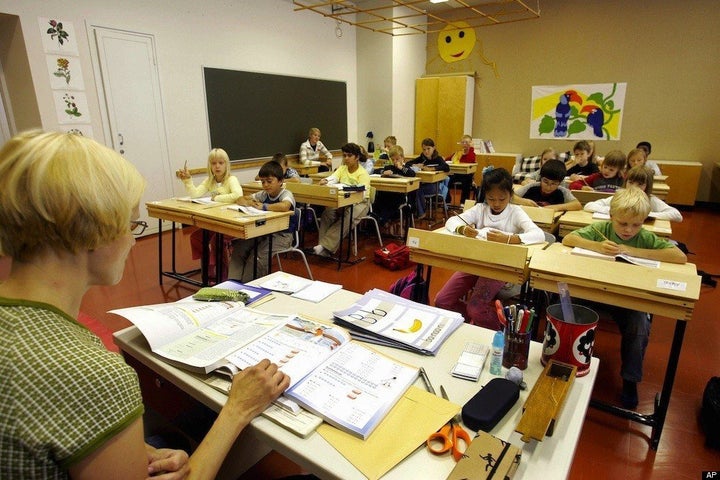
Last week, Finland was once again among the top-scoring nations on the Programme for International Student Assessment (PISA), an exam given to 15-year-olds around the world. U.S. students were in the middle of the pack for science and literacy but below average in mathematics.
To gain insight into what Finland's doing right, I sat down on December 9 with Dr. Pasi Sahlberg, Director General of the Centre for International Mobility and Cooperation in Finland's Ministry of Education and Culture. Sahlberg, who has trained teachers, coached schools and advised policy makers in more than 40 countries, is also a former Washington-based World Bank education specialist. An edited version of our conversation follows.
The Hechinger Report: Two Million Minutes, a recent documentary by Bob Compton, reveals that American students spend significantly less time learning than their counterparts in India and China. But in your work, you've indicated that increasing instructional time isn't necessarily a good idea. Why?
Sahlberg: There's no evidence globally that doing more of the same [instructionally] will improve results. An equally relevant argument would be, let's try to do less. Increasing time comes from the old industrial mindset. The important thing is ensuring school is a place where students can discover who they are and what they can do. It's not about the amount of teaching and learning.
The Hechinger Report: Given your reservations about things like standardized testing, choice and competition, I'm wondering how you're received in the United States. Are you loved by teachers but loathed by some reformers?
Sahlberg: The reception has been very positive everywhere. The thing is that everyone has exactly the same goal -- good schools for all -- but there are disagreements on how to get there. What I want to do is challenge people to see that things can be done differently. In Finland, we've gone from having a very poor system in the 1970s to what the recent McKinsey report called the only excellent system in the world.
The Hechinger Report: How did Finland do it?
Sahlberg: Most educational ideas that we are employing are initially from the United States. They're American innovations done in a Finnish way. You know, in the United States, there are more than enough ideas, there's superior knowledge about educational change and you speak a language that has global reach. If you want to learn something from Finland, it's the implementation of ideas. It's looking at education as nation-building. We have very carefully kept the business of education in the hands of educators. It's practically impossible to become a superintendent without also being a former teacher. ... If you have people [in leadership positions] with no background in teaching, they'll never have the type of communication they need.
The Hechinger Report: So what do you make of the recent trend in the United States of hiring non-educators to run large urban school systems?
Sahlberg: This is a very alien idea to Finns. ... You know, a former head coach of the Chicago Blackhawks was Finnish, and when he returned to Finland, he was appointed director of one of the largest theaters -- a completely different field. He left after one year. There was no buy-in.
The Hechinger Report: What are your thoughts on the use of value-added data to measure teacher performance, which is quite popular in the United States at the moment?
Sahlberg: It's very difficult to use this data to say anything about the effectiveness of teachers. If you tried to do this in my country, Finnish teachers would probably go on strike and wouldn't return until this crazy idea went away. Finns don't believe you can reliably measure the essence of learning. You know, one big difference in thinking about education and the whole discourse is that in the United States it's based on a belief in competition. In my country, we are in education because we believe in cooperation and sharing. Cooperation is a core starting point for growth.
The Hechinger Report: Waiting for "Superman" put pressure on teachers' unions in the United States and they've also come under criticism from some experts, reformers and the Obama administration. But others, like Linda Darling-Hammond of Stanford, have pointed out that top-performing countries such as Finland have strong teachers' unions. So what do you make of teachers' unions in the United States?
Sahlberg: In Finland, unions aren't an obstacle. Ninety-eight percent of teachers are unionized. And this is very important to the success of our system. I wouldn't buy the argument that unions are a problem.
